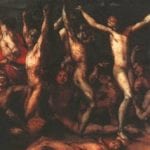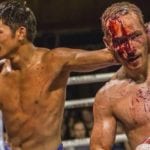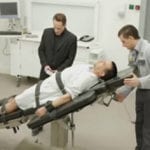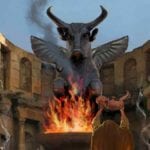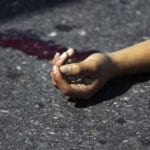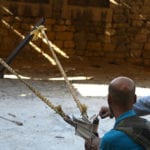 Technology
Technology  Technology
Technology  Humans
Humans 10 Everyday Human Behaviors That Are Actually Survival Instincts
 Animals
Animals 10 Animals That Humiliated and Harmed Historical Leaders
 History
History 10 Most Influential Protests in Modern History
 Creepy
Creepy 10 More Representations of Death from Myth, Legend, and Folktale
 Technology
Technology 10 Scientific Breakthroughs of 2025 That’ll Change Everything
 Our World
Our World 10 Ways Icelandic Culture Makes Other Countries Look Boring
 Misconceptions
Misconceptions 10 Common Misconceptions About the Victorian Era
 Mysteries
Mysteries 10 Strange Unexplained Mysteries of 2025
 Miscellaneous
Miscellaneous 10 of History’s Most Bell-Ringing Finishing Moves
 Technology
Technology Top 10 Everyday Tech Buzzwords That Hide a Darker Past
 Humans
Humans 10 Everyday Human Behaviors That Are Actually Survival Instincts
 Animals
Animals 10 Animals That Humiliated and Harmed Historical Leaders
Who's Behind Listverse?

Jamie Frater
Head Editor
Jamie founded Listverse due to an insatiable desire to share fascinating, obscure, and bizarre facts. He has been a guest speaker on numerous national radio and television stations and is a five time published author.
More About Us History
History 10 Most Influential Protests in Modern History
 Creepy
Creepy 10 More Representations of Death from Myth, Legend, and Folktale
 Technology
Technology 10 Scientific Breakthroughs of 2025 That’ll Change Everything
 Our World
Our World 10 Ways Icelandic Culture Makes Other Countries Look Boring
 Misconceptions
Misconceptions 10 Common Misconceptions About the Victorian Era
 Mysteries
Mysteries 10 Strange Unexplained Mysteries of 2025
 Miscellaneous
Miscellaneous 10 of History’s Most Bell-Ringing Finishing Moves
10 Brutal North Korean Secrets
If the Kim family had their way, the entire world would think North Korea was a beautiful paradise and that every one of its leaders was a blessing sent straight from heaven. Needless to say, North Korea’s media has a slight penchant for bias, and thanks to their strict tourism policy (anyone can visit as long as they’re already in the country), it’s difficult to get a firm grasp on what actually goes on inside the borders of this closed, totalitarian state.
SEE ALSO: 10 Horrifying Accounts Of North Korea’s Prison Camps
But thanks to a few daring undercover journalists who snuck in, along with gruesome reports from defected North Koreans who snuck out, we’re getting a better picture of how the cogs turn behind the veil of this great propaganda machine. And it’s not pretty.
10 Labor Camps
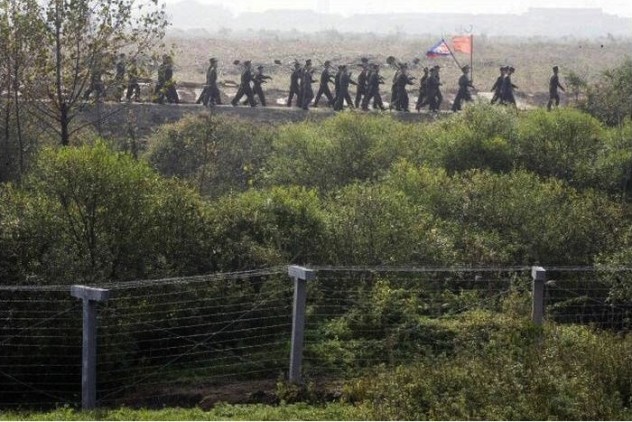
North Korea currently operates about 16 labor camps—massive compounds scattered across the mountainous terrain and enclosed by electrified barbed wire fences. It’s estimated that somewhere around 200,000 prisoners are held in these camps at any given time.
The prison cities are often compared to the Gulag camps of Soviet Russia—forced labor camps in which prisoners are held in brutal working conditions and executed for crimes as petty as stealing a few kernels of corn. Prisoners are usually a mix of defectors, traitors, and ex-politicians who ran afoul of the government—a fairly easy thing to do.
9 Three Generations Of Punishment
North Korean law dictates a “three generations of punishment” policy: If you commit a crime, your children and grandchildren will carry the stains of your sin and be punished accordingly. That means that if your grandfather committed a crime, you get to bear the full brunt of his punishment. As mentioned above, this usually leads to entire lives spent inside prison camps. One of the worst offenses that a North Korean can commit is attempting to leave North Korea, which can justify either immediate execution or an extended sentence in one of their labor camps.
Criticizing the government, no matter how slightly, is also considered a treasonous offense. Simply learning about other cultures warrants a death sentence. Recent smuggling between the border of North Korea and China has allowed some people to get DVDs of Western movies—which are illegal. The North Korean National Security Agency has begun raiding villages in the north of the country by shutting off the electricity to a whole village then storming into houses and checking which DVDs are stuck in the DVD player.
8 Insurance Fraud
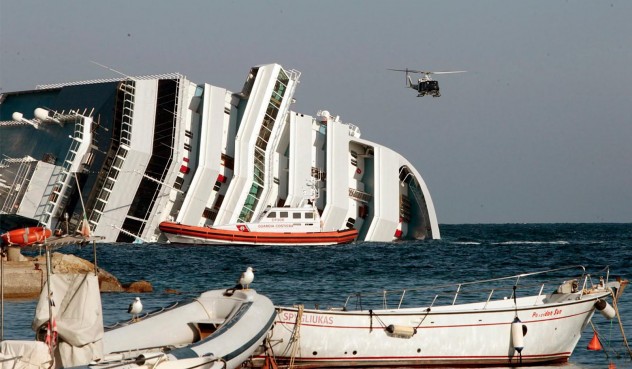
The North Korean economy is, in all measurable aspects, completely failing. Exports are virtually nonexistent due to their reluctance to interact with foreign markets, as well as the fact that they struggle to feed everyone living within their own borders. The current population of North Korea is about 25 million, and the average GDP per person is about $500 (for comparison, in the US it hovers around $50,000).
To supplement their ailing economy and bring in more money, North Korea has been known to turn to international crime. One of these crimes is global insurance fraud: They’ve conned Western insurance companies out of hundreds of millions of dollars. Brought to light in 2009, it turns out that the North Korean government had been taking out huge insurance policies on property and equipment, then claiming that it had been destroyed.
In 2005, several of the world’s largest insurance companies, including Lloyd’s of London, took North Korea to court over an alleged helicopter crash with a $58 million insurance policy. When North Korea’s state-run courts “reviewed” the case, they announced that it was a legitimate claim. The insurance companies settled because their contract was subject to North Korean law, which is a bit like playing “I win” with a toddler.
7 Arms Dealing
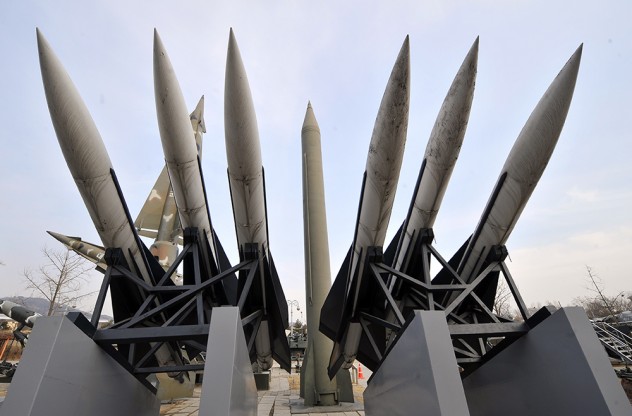
Insurance fraud aside, the United Nations has also accused North Korea of selling illegal weapons and nuclear technology to the highest bidder, which usually means countries in Africa and the Middle East. For example, in 2012, the UN seized a North Korean shipment heading to Syria which contained nearly 450 graphite cylinders meant for use in ballistic missiles. In 2009, shipments to both Iran and the Republic of Congo were caught in transit—one had 35 tons of missile components, and the other contained Soviet-era tanks.
According to UN sanctions, North Korea has been banned from trading or selling missile technology, but North Korea came right back out and said that it’s actually the sanctions that are illegal, and they can do whatever they want. It’s hardly a surprise then that North Korea’s arms trade isn’t slowing down at all. Like the insurance fraud, it’s a much needed source of revenue for the government—although according to Blaine Harden at the Washington Post, the majority of that money goes into Kim Jong Un’s personal stash rather than toward food for his people.
6 Electricity
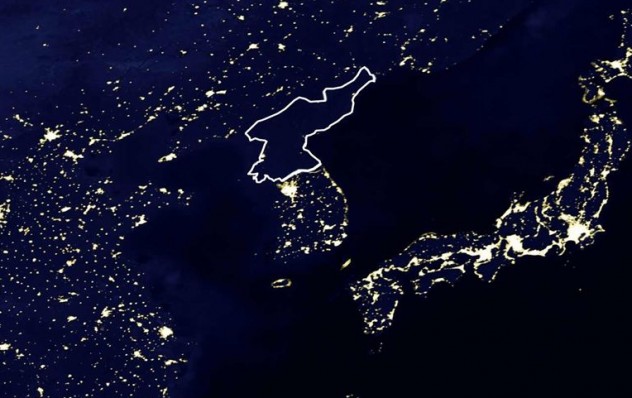
The capital city of North Korea, Pyongyang, is something of a self-styled utopia reserved for the population’s elite. Armed guards patrol the borders to keep the lower classes from entering, and most of the residents of Pyongyang live in something approaching luxury—with a given value of “luxury” (maybe they don’t get enough food, but they at least get more than everyone else in the country). Yet even the three million upper-class citizens aren’t given electricity for more than an hour or two a day.
Sometimes, especially in winter, the power goes out completely while millions of people try to battle the frigid temperatures that can get below -17.8 C (0 F). The majority of the homes outside Pyongyang don’t even have electricity to begin with. The nighttime satellite image above really drives the point home—to the north and south are China and South Korea respectively, and the outlined dark patch in between is North Korea.
5 Three-Caste System
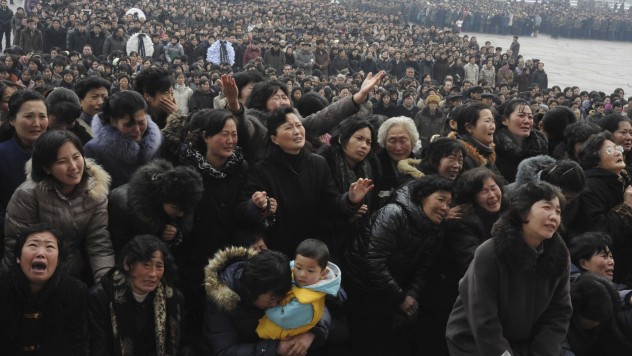
In 1957, when Kim Il Sung was struggling to retain control over North Korea, he launched a massive investigation into the populace of the country. The end result of that investigation was a completely changed social system that separated everybody into three classes: “hostiles,” “wavering,” and “core.” The designations were based not on the person, but on their family history.
Those with a history of loyalty to the government were put into the “core” class and given the best opportunities. These are now the politicians and people closely associated with the government. The people in the middle are the “wavering,” or neutral class. There’s nothing really going for or against them, and it’s possible, though unlikely, that they can move up to the core class. Usually though, people move down through the system rather than up. The “hostiles” are people with a family history of such crimes against the state as Christianity and land ownership. They’re the subversives, and according to Kim Il Sung, pose the greatest threat to the government. Because of this, they are denied education, are not allowed to live in or near Pyongyang, and are forced into abject poverty.
4 Human Feces Fertilizer
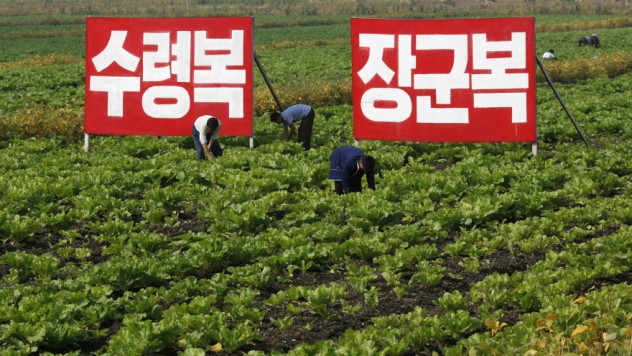
North Korea’s geography is mountainous and arid, with long, frigid winters and short, monsoon-filled summers. About 80 percent of the country is located either on the side of a mountain or at the top of one, which means most of the land is terrible for farming. Historically, North Korea has always relied on foreign aid to get the fertilizers it needs: The Soviet Union gave them fertilizer before it collapsed, and until recently, South Korea was sending them 500,000 tons of fertilizer each year to help boost food production.
But South Korea stopped sending fertilizer in 2008, and farmers had to turn to a new source: human waste. It went so far as to become a government program. Factories were required to turn over their feces to meet a quota of two tons. Recently, illegal shops have capitalized on the demand for human waste, which is now considered a commodity.
3 South Korean Citizenship
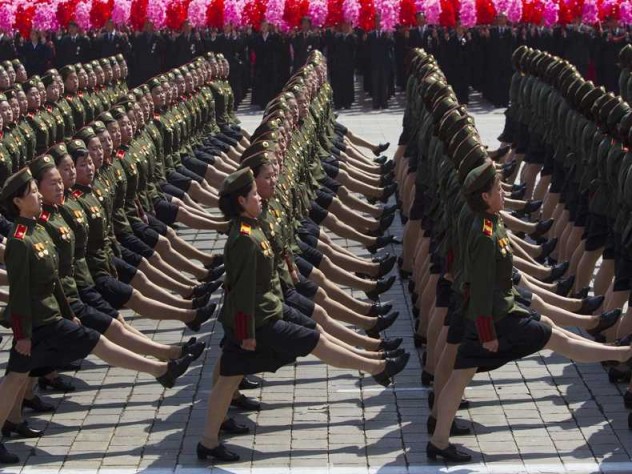
To put it simply, there are so many people fleeing North Korea that there’s nowhere for all of them to go. China’s official policy is to send them back across the border. There they are either executed or consigned to a labor camp for decades of brutal work that usually turns out to be just as effective as any death penalty. Only South Korea maintains a policy of near-absolute clemency: All North Korean defectors (who aren’t criminals) are immediately provided with citizenship, job training, and for those who need it, psychological counseling. They’re also given a place to live and $800 a month. As an incentive for businesses, the South Korean government offers a bonus of $1,800 to anyone who will hire a refugee.
Although North Koreans technically need to provide paperwork to prove their citizenship, it’s not uncommon for that requirement to be waived. In the case of refugees from labor camps, they simply don’t have any paperwork. For people who were born in the labor camps, there was never any paperwork to begin with. Since 1953, there have been over 24,500 North Korean defectors who ended up in South Korea. Starting in 2002, South Korea was taking in over 1,000 per year. And that’s just those who made it to South Korea. The Chinese government estimates that there are up to 200,000 North Koreans illegally hiding out in the hills and rural provinces of their country. Many people who make it out of North Korea via China still end up dying during their long treks.
2 Cannibalism
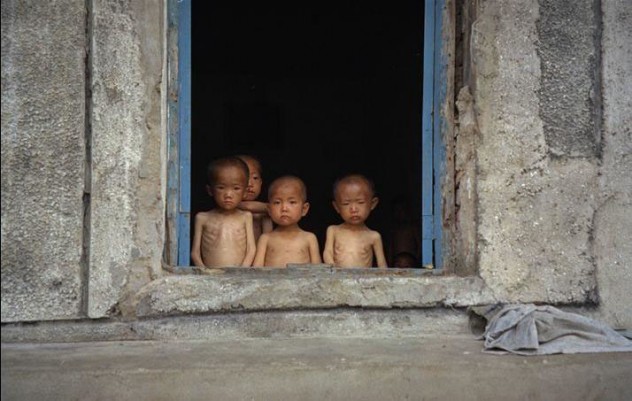
A crippling famine struck North Korea between 1994 and 1998. Widespread flooding left most of the farm land unusable. When that was combined with an ever-increasing debt to the Soviet Union that prevented any importing of food, entire cities drifted into a twilight of death. It’s estimated that close to 3.5 million people died of starvation during that time—more than 10 percent of the population.
With what little food they had being confiscated by the military in compliance with the Songun policy, North Koreans turned first to their pets for sustenance, then crickets and tree bark, and finally, children. It became a saying: “Don’t buy meat if you don’t know where it came from.” According to defectors from the time of the famine, people would look for the vagrant children that often begged around train stations, drug them, then take them home and—well, you can fill in the pieces.
There’s at least one official account of a man being executed for cannibalism, and even though it’s believed that fear of cannibalism was more prevalent than the cannibalism itself, there are enough firsthand horror stories floating around to lend some legitimacy to these gruesome tales.
1 Torture Prisons
To date, very few people have escaped from North Korea’s labor camps and lived to tell the tale. And of these refugees, only one known person has escaped from the dreaded Camp 14, widely considered to be the most brutal labor camp in the country and reserved for only the most serious political criminals. That person was Shin Dong-hyuk, whose story is told in the incredible book Escape From Camp 14.
Shin was born in the camp because his uncle had deserted the army and defected to South Korea. When he was 14 years old, his mother and brother attempted to escape. When they were caught, Shin was taken to an underground torture prison, a “prison within a prison.” According to his story, he was strung to the ceiling upside-down by metal shackles around his ankles while guards questioned him about his mother’s escape attempt. When that didn’t work, he was hung by his hands and feet so his body formed a “U,” and slowly lowered over a vat filled with hot coals. A gaffing hook was stuck through his stomach to keep him from wriggling away as the skin on his back blistered and burned.
In between interrogation sessions, he was dumped into a tiny concrete cell with a light burning 24 hours a day, the blisters on his back festering with infection. While in the cell, Shin could hear the echoing screams of other prisoners being tortured, and he estimates that hundreds of people passed through there. He was kept in this prison for seven months and is the only person who has ever been able to tell of their existence. As it turned out, he had heard his mother talking about escaping and informed a guard. The guard reported it but never mentioned Shin’s involvement. After Shin’s story was verified, the guard was never seen again, and Shin was released just in time to watch his mother and brother executed.


